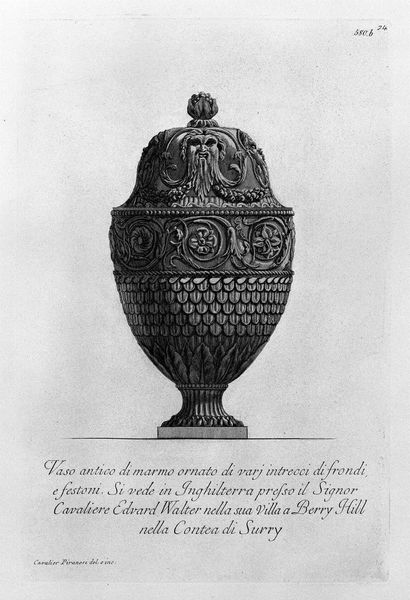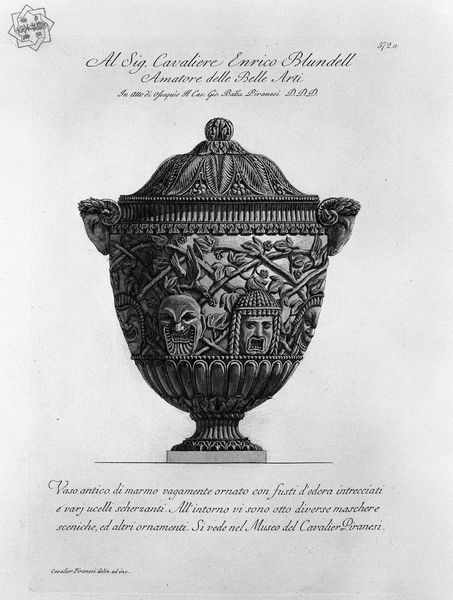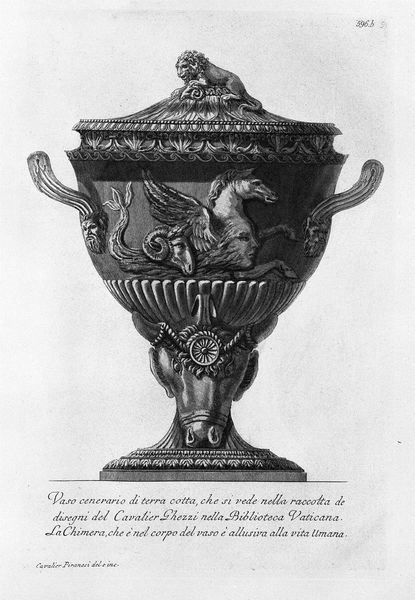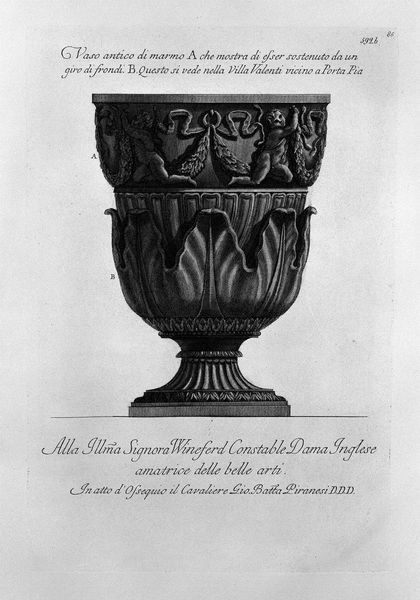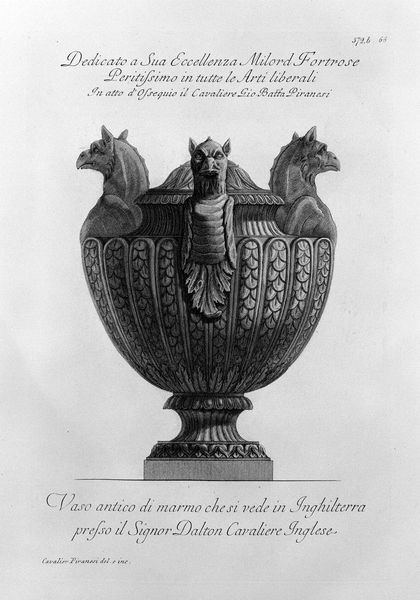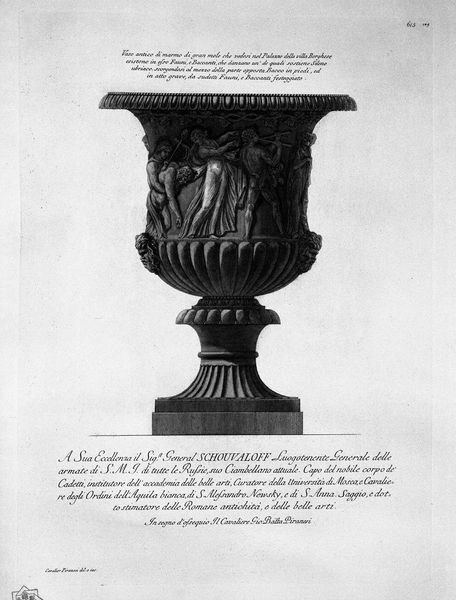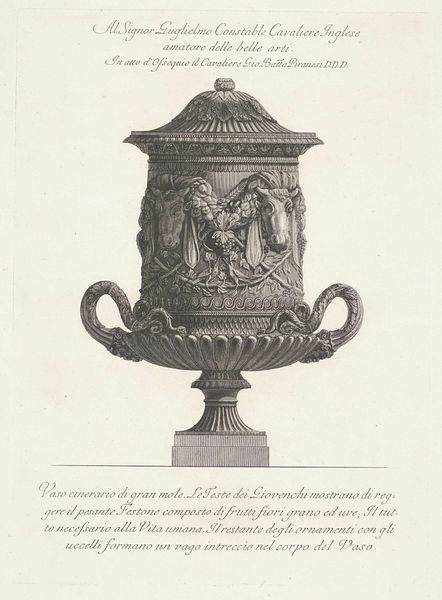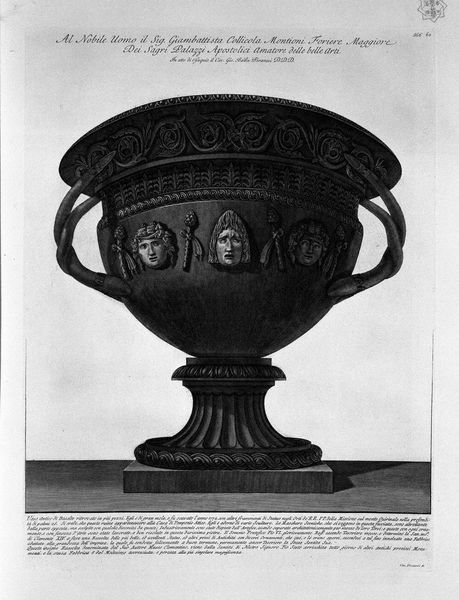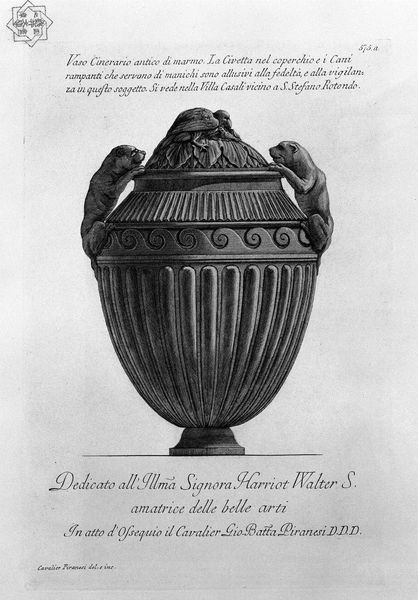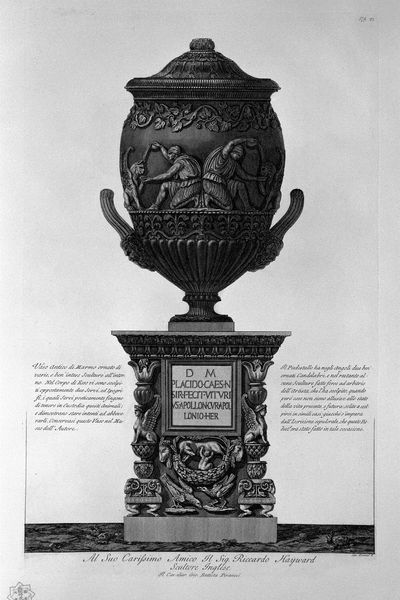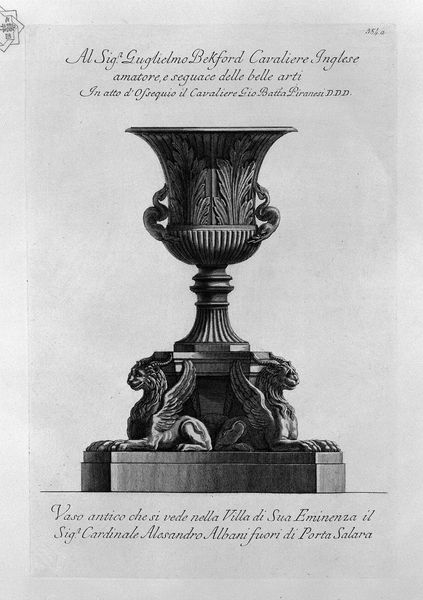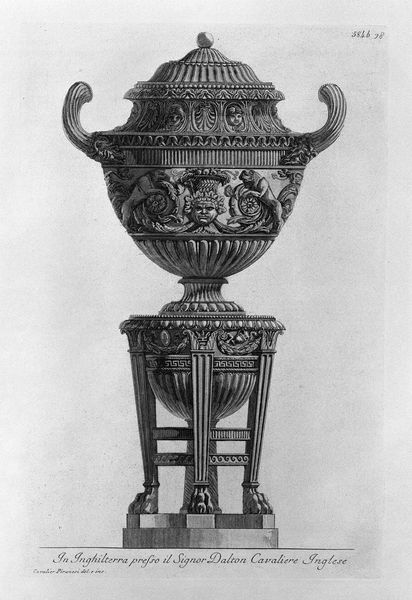
drawing, print, etching, paper, ink, engraving
#
portrait
#
drawing
#
neoclacissism
# print
#
etching
#
greek-and-roman-art
#
landscape
#
figuration
#
paper
#
romanesque
#
ink
#
roman-mythology
#
journal
#
script
#
limited contrast and shading
#
mythology
#
history-painting
#
academic-art
#
italian-renaissance
#
engraving
#
historical font
Copyright: Public domain
Curator: We're looking at an engraving by Giovanni Battista Piranesi. It’s titled "Urn Vase with Bacchae and Divinity.” Piranesi, of course, was a master of etching and engraving in 18th century Italy. Editor: My first impression is how ornate this urn is! It’s a towering, imposing design, even in this print form. The detail in the figures and the fluted body… it’s excessive, almost theatrical. Curator: Exactly. Piranesi straddled the line between documenting existing Roman antiquities and imagining grandiose versions of them. He had a powerful influence on the Neoclassical movement, and a complicated relationship with the establishment of antiquities collecting. This print really showcases his ambition in portraying historical objects with a dramatic license. Editor: This connects directly to ideas of power and display in the 18th century. He is showing figures of divinity mixed with the Bacchae, the ecstatic female followers of Bacchus. I see this choice of image as a reference to the tradition of representing elite women and power structures during that period of colonialism and patriarchal ascendency. Curator: An interesting connection, since prints like these also had a very specific social function: to make ancient treasures available for a growing, more international audience through these detailed, easily distributable replications. Editor: Still, by choosing to spotlight scenes of bacchanalia alongside divinity, isn’t Piranesi hinting at a different reading of established power? Acknowledging the feminine chaos alongside supposed divine masculinity is powerful within a culture actively working to suppress those voices. Curator: It’s an interesting thought. But what do we know for sure about how it was displayed at the time and how it interacted with other such images circulating in Europe? The text, up top, is an homage, which underscores his complex connections within the artistic community. This helps emphasize who was really at the centre of these visual worlds that artists like Piranesi inhabited. Editor: Fair enough. The tension between official endorsement and implied rebellion is what makes the image so compelling. It’s not a simple celebration of Neoclassical order. Curator: Not at all. And I find thinking about the circulation of these images in a developing global landscape particularly interesting. Thank you. Editor: And thank you. These works encourage us to continue finding new interpretations of the social fabric, and I believe in promoting those open readings of historical periods to find justice in our own lives.
Comments
No comments
Be the first to comment and join the conversation on the ultimate creative platform.


